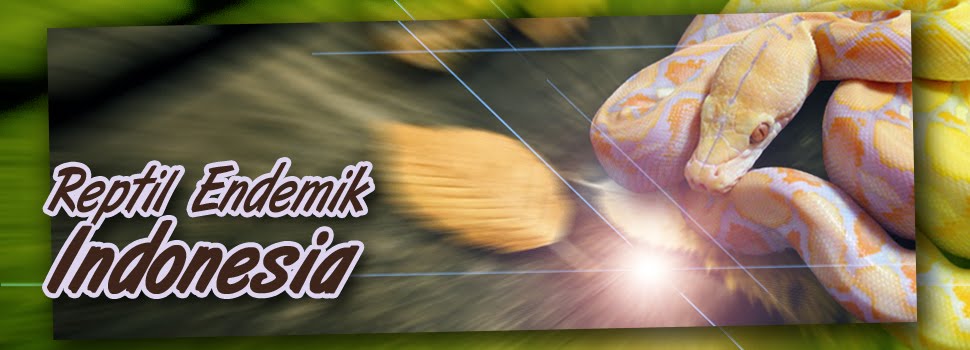Leiopython
Rabu, 14 April 2010
Albertisi
Meet my Lippy
Lippy adalah Ular ku yang SUPER GALAK...
ku pelihara dari baby dan sampai besar tetap menggigit sana-sini
Lippy harus di handle dengan sangat hati-hati untuk menjaga tempramennya tetep adem ayem,,, tapi tenang aja, gak semua albertisi galak kok.. hehe


Leiopython
From Wikipedia, the free encyclopedia
| Kingdom: | Animalia |
| Phylum: | Chordata |
| Subphylum: | Vertebrata |
| Class: | Reptilia |
| Order: | Squamata |
| Suborder: | Serpentes |
| Family: | Pythonidae |
| Genus: | Leiopython Hubrecht, 1879 |
Common names: white-lipped python, D'Albertis' python, D'Albert's water python.
Leiopython, formerly a monotypic genus, now comprises six species, created for the non-venomous python species, L. albertisii, found in New Guinea. No subspecies are currently recognized. It was first described as an intermediate genus between Liasis and Nardoa. The species was named in honor of Luigi D'Albertis.
Description
Female Adults of the Northern White-Lipped Python (Leiopython albertisii) grow to an average of about 213 cm in length (6-7 ft), whereas the Southern White-Lipped Python (Leiopython hoserae) can reach up to 300 cm (10 ft) in length. They are patternless, except that the Northern White-Lipped Python has some light markings on their postoculars absent in the Southern White-Lipped Python. The snout is triangular and the head is distinct from the neck. The dorsum of the head is shiny black, the upper and lower labial scales are white with black markings on the anterior edge of the scales. Body color is either brownish-violet fading to yellowish ventrally (Leiopython albertisii) or blackish-blue fading to gray (Leiopython hoserae). These pythons also regurgitate fur balls, also known as "Casting." This behavior is rarely seen, but 2-3 days after feeding the results are seen. When it is witnessed owners of White lipped pythons often think their snake is regurgitating it's food.
Geographic range
Found in most of New Guinea (below 1200 m), including the islands of Salawati and Biak, Normanby, Mussau and Emirau, as well as a few islands in the Torres Strait. The type locality given is "Kapaor in Nova Guinea boreali occidentali ... et prope Andai..." also stated "... un esemplare a Kapaor fra i Papua Onin..." and "... un secondo esamplare ad Andai presso Dorei..." (Kapoar, Onin Peninsula and Andai, near Dorei, Irian Jaya, Indonesia).
Some doubt can be cast on its occurrence on Normanby, as McDowell (1975) had erroneously assigned Bara Bara to this Island, rather than to the mainland of Papua New Guinea in Milne Bay Province as stated by Boulenger (1898) and Koopman (1982).
Habitat
Associated with rain forests, cutover clearings and swamps. Usually found near water, into which they may quickly retreat if disturbed. Often hide under dead leaves on forest floor.
Feeding
The diet includes a range of birds and mammals that are small to medium in size. Neonates and young semi-adults often feed on lizards.
Reproduction
Oviparous, with females laying about a dozen eggs. The eggs stick together in a compact pile and the females coils around them. The hatchlings emerge after about two months of incubation and are about 38 cm (15 inches) in length.
Taxonomy
A new species L. hoserae, and two new subspecies L. albertisii barkeri and L. a. bennetti, were described in Hoser (2000), but these descriptions are considered vague and questionable. In 2008, Schleip redescribed and provided proper descriptions and diagnoses for two of Hoser's (2000) taxa, Leiopython hoserae, from the southern lowlands of Papua New Guinea and neighbouring Indonesia, and L. benettorum, from the highlands of Morobe Province, Papua New Guinea. A third, Leiopython albertisii barkeri was considered a nomen nudum due to Hoser not having provided a description that includes characters to differentiate this taxon from others. Three new species were also described: L. biakensis from the island of Biak (part of the Indonesian Province of Papua, L. fredparkeri from the Karimui Basin, Simbu Province, Papua New Guinea, and L. huonensis from the Huon Peninsula, Morobe Province, Papua New Guinea.
The taxonomy of the Pythonidae family is fluid, however, an arrangement of the genus may be summarised as:
- Antaresia
- Apodora
- Aspidites
- Bothrochilus
- Leiopython
- Leiopython albertisii, D'Albert's water python
- Leiopython bennettorum, Bennett's white-lipped python
- Leiopython biakensis, Biak white-lipped python
- Leiopython fredparkeri, Parker's white-lipped python
- Leiopython hoserae, southern white-lipped python
- Leiopython huonensis, Huon white-lipped python
- Liasis
- Morelia













3 komentar:
Nice collection of snakes.
thanx bro...
Memang susah ditebak nih bang karakter Ular yg satu ini.. -_-
Posting Komentar